By Cliff Rames © 2013
Suddenly the sweet fruits of Croatia’s July 1st ascension to the European Union have turned to sour grapes. At least when it comes to wine.

Not just any wine, mind you, but one with a centuries-old tradition that is a strong symbol of national pride and family life, as well as a trusted elixir that locals depend upon to treat ailments and celebrate important milestone events in their lives.
Are we talking about Prosecco? Heck, no.
I mean no disrespect to Prosecco. It’s a delightful wine. Simple, bubbly, festive. A popular patio pounder for summer days by the pool. An ingredient in trendy cocktails. Italy, through the venerable Consorzio di Tutela del Prosecco di Conegliano Valdobbiadene (the Consortium), deserves to be proud and should protect it. It’s a cash cow, a wildly successful product that supports multiple Italian winemaking regions and helps to keep many wholesalers, advertising and public relations firms in business.
Sounds completely harmless, right?
Not exactly. As the Wall Street Journal recently reported in an article entitled, “A European Name Game Uncorks a Tempest in a Wine Cask”, Croatia’s right to continue using the traditional name “Prošek” for a small-production dessert wine made from sun-dried grapes is under attack. The European Union, prodded on by the Consortium, fears that the two names are too similar and that consumers (you and I) will be confused, thus harming the Prosecco brand and endangering a 300-million-bottle-a-year industry.
So how can one obscure, tiny-production, barely-exported sweet wine called Prošek pose such a threat to mighty Prosecco? Simply put, it doesn’t. But pride, mistaken perceptions, protectionism, and the demands of the powerful often align to trump common sense.
In an attempt to expose the absurd nature of this mess, cut away all the confusion, and clarify the debate, here are 12 ways in which Prošek can be easily differentiated from Prosecco – and visa versa. The bottom line is, consumers have nothing to fear – nor do Prosecco producers or the European Union.
I realize that at this stage in the game these arguments may be mute. But for the sake of posterity perhaps there is some value in showing why Croatia should be able to keep on calling its Prošek “Prošek” – as it has done for centuries – while also distinguishing and respecting Prosecco’s rightful place in the world of wine.
1) Custom and Tradition
The method for making Prošek is ancient and apparently dates back to the arrival of the Greeks to the Dalmatian islands in the 4th century B.C. However, the first written mention of Prošek occurred in 1556, when the Croatian poet Petar Hektorović in his famous work, Ribanje i Ribarsko Prigovaranje (Fishing and Fishermen Talk), lists the local sweet wine among the provisions he and two companions pack for a three-day fishing expedition on the Adriatic Sea.
As on Petar Hektorović’s boat, in the Dalmatia region of Croatia a bottle of Prošek is never far from hand. A straw-wrapped jug of homemade Prošek can usually be found hiding in the pantries and cellars of every household and, if you are lucky, a taste is offered (alongside a plate of dried figs and biscuits) when you arrive as a guest.

Croat families proudly pass down Prošek recipes through the generations. It is often used as an ingredient in traditional holiday cookies and cakes. Parents set aside bottles from the vintage in which a child was born and then customarily open them on the child’s wedding day. Prized bottles are gifted from one family to another at Easter, Christmas and other special occasions. New mothers slurp a spoonful after giving birth to help them mend and regain strength. Suffers of anemia and other ailments are urged to sip some Prošek to bolster the blood.
Old wives’ tales? Perhaps. But these stories serve as seminal evidence of Prošek’s deep-rooted contribution to Croatian culture and its firm place in the social lives of Croatians throughout the centuries.
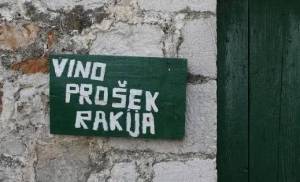
Prosecco too has an impressive history, with some vineyard sites in the Conegliano Valdobbiadene zone estimated to be over three hundred and some even a thousand years old. Yet the first written reference to the wine did not arrive until 200 years later (in 1754), when (according to Wikipedia) a fellow named Aureliano Acanti wrote, “And now I would like to wet my mouth with that Prosecco with its apple bouquet“.
This dated but cute quip could easily serve as a contemporary marketing slogan for Prosecco. Indeed today’s consumer identifies with Prosecco as a metropolitan, early-drinking, affordable and pleasant everyday quaffer. According to a report in Meininger’s Wine Business International, consumers do not identify with, or care all that much about, Prosecco’s history, background story, or protected DOC status (granted in 1969) and much-heralded DOCG status (approved in 2009). They do care about access to low-priced, easy-to-understand and appreciate alternatives to pricier sparkling wine.
Prosecco is a product of the modern world. Modern technology (the Charmat tank, autoclaves, sterile filtration, bottling under pressure) has enabled Prosecco to be produced in mass quantities and become the very successful and ubiquitous export product it is today.
Unlike Prošek, wine lovers buy bottles of Prosecco for casual consumption and instant refreshment – not to tuck away for decades or until their children get married. In fact, consumers are advised to purchase Prosecco young and avoid bottles that have been too long on the shelf. Conversely, an intact bottle of Prošek from 1899 was recently discovered in the cellar of a wine bar on Hvar island.
How do you like them apples?
2) Pronunciation
The two names – while similar – are written and pronounced in completely different ways. “Prošek” is enunciated as “Pro-shek”, while “Prosecco” is pronounced “Proh-sec-coh”. Two syllables versus three. A “sh” sound as in “Shirley” versus a “sec” sound as in “secular”.
3) Grapes
Prošek is produced from any one or a blend of several different varieties – white and red – indigenous to coastal Croatia. Permitted white varieties include bogdanuša, dubrovačka malvasija, grk, malvazija istarska, maraština, plavac mali, prč (aka parč), pošip, tarpinka, trbljan, vugava, and žlahtina. Red varieties are primarily babić, lasina, plavina, and plavac mali.
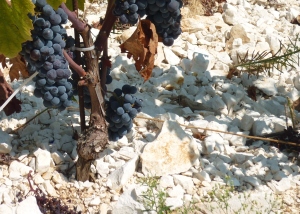
Prosecco is most often produced from the glera grape variety (previously known as prosecco), but small amounts of bianchetta, charnonnay, perera, pinot noir, and verdiso are permitted.

4) Area of Production
Prošek is produced all along the Adriatic coast of Croatia but mainly in southern Dalmatia and on many of the islands where vineyards thrive in limestone soils among olive, fig, and pine tree groves. As winemaker Alen Bibić observed to the Wall Street Journal, when you sip on Prošek, “you can feel the Mediterranean”. Dried fig, raisin nectar, candied orange peel, and roasted nut characteristics reflect the wine’s sun-baked, seaside terroir.
Prosecco is clearly a product of Italy, where it is produced throughout the Veneto, Friuli Venezia Giulia, Conegliano, and Valdobbiadene regions in the northeast corner of the country. Much of the growing area lies in the foothills between the Dolomites and the Adriatic Sea, with the highest vineyard elevations located in the Valdobbiadene zone, particularly in Cartizze. The clean, zippy green apple, fresh melon, and citrus character of the wine reflects its pristine Alpine terroir.
5) Production Amounts
Traditional Prošek is typically made by small, family-owned wineries, of which 27 are registered producers (I do not count the non-traditional, industrial Prošek produced from cooked musts and caramelized sugar, such as the supermarket products from Dalmacijavino and Vinoplod) with an annual production of 15,000 liters – or 30,000 500 ml bottles. For example, BIBICh winery produces about 5,000 bottles a year of the multi-vintage BIBICh Ambra, while in a good year Andro Tomić of Bastijana winery produces up to 4,000 bottles of his acclaimed Hektorovich Prošek.

Over 3,000 registered wineries produce Prosecco in Italy, and over 2,400 are members of the Consortium. The Prosecco DOC zone contains 19,700 hectares of vines planted to allowable varieties, and the Consortium reports that another 5,650 hectares are registered within the DOCG growing area (for a grand total of 25,350 hectares). Wine production amounts total approximately 225,000,000 liters – 300 million bottles a year.
By comparison, the total area planted to all varieties across every winemaking region in Croatia equals 24,000 hectares, with approximately 10,000 hectares under vine in Dalmatia where Prošek varieties are cultivated as a minor component of the grapes reserved for still dry wines. Total wine production in Croatia amounts to 60 million liters – or 80 million bottles – of all types.
At 15,000 liters, Prošek production equals less than 1% (.025%) of the total amount of wine made in Croatia and .006667% of Prosecco production.
6) Winemaking Techniques
Prošek is made from grapes harvested with a sugar level of 100° Oechsle (approximately 23.5 Brix, or the equivalent of the German Auslese classification). Once harvested, the clusters are laid out on straw mats to dry in the sun for 3-4 months or until the grapes shrivel and achieve a sugar concentration of 120° Oechsle (28 Brix, or the equivalent of Beerenauslese). The grapes are then crushed and the must is macerated for 2-5 days, when the juice is pressed off the skins. Yeast must be selected based on its ability to function in a thick must with a high concentration of sugar. Fermentation can be extremely slow – often lasting up to a year or longer. Once the wine has finished fermenting, it is then aged in wood casks (usually older, neutral wood) for a minimum of one year. Most producers do not filter the wine. Typically it takes about 1 kilogram of dried grapes to produce 750 ml of Prošek.

Grapes for Prosecco are harvested with low sugar levels and high acidity. The (usually) non-vintage wine is produced using the Metodo Charmat (tank method), whereby the secondary fermentation takes place under pressure in large steel tanks called autoclaves and not in the bottle, as with Champagne (Méthode Champenoise). The idea, as described by Tom Cannavan in Wine-pages.com, is to “capture the fresh fruitiness” of the glera grape and highlight the wine’s distinctive “icing sugar and lemons” character. The wine is then bottled under pressure to retain its carbonation and quickly shipped off to market.
7) Wine Styles
Prošek is a still wine with a minimum alcohol content of 15%-22% that has been aged in wood for at least one year. Residual sugar content ranges from 70-150 grams per liter (g/l). Prošek is dark, thick, unctuous, and sweet, with flavors of dried fig, raisin nectar, coffee, toasted hazelnuts, burnt toffee, candied orange rinds, honey, vanilla, and carob.
Prosecco is a sparkling wine with an average alcohol content of 11% and no wood exposure or influence. Depending on the level of carbon dioxide, Prosecco can be either Spumante (3.5 bars of pressure) or Frizzante (1.0-2.5 bars of pressure). Styles include Brut (0-13 g/l residual sugar), Extra Dry” (12–17 g/l) and “Dry” (17–32 g/l). Prosecco is light, bubbly, delicately perfumed with notes of citrus, apple, melon, and spring flowers.
8) Wine Color
Depending on the types of grapes used and the age of the wine, the color of Prošek can range from deep gold to amber, neon orange, maple syrup, and dark brown.
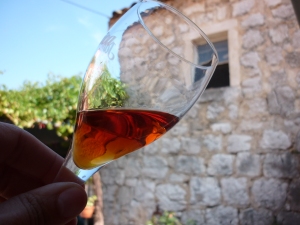
Prosecco is simply straw-colored or light to medium yellow with a watery white rim.

9) Bottle Shape
While there is no standard bottle shape for Prošek, traditionally it is stored in large straw-covered jugs or demijohns for home or non-commercial use. When available for commercial sale, dessert wine bottles of 375-500 ml are the norm. These vessels are often fancy and oddly shaped and include short, small jug-like bottles (BIBICh Ambra) to tall clear cylinders and tapered obelisks.

Prosecco is typically packaged in the easily-identifiable and customary sparkling wine bottle, which is similar in shape to the Champagne bottle and includes the mushroom-shaped cork and often a metal cage under a foil wrap. Prosecco can also be packaged in aluminum cans similar to those used for beer.


10) Serving Glass
Customarily Prošek is served in a small, tulip-shaped dessert wine glass. However, there is no “official” serving glass; any small, flared-rim vessel will do.

The most commonly used glass for Prosecco is the Champagne flute.

11) Availability on Export Markets
Ask yourself this: When was the last time you saw a bottle of Prošek in your local wine shop? Most likely the answer is, never. Because of the tiny production, very little of Croatia’s famous dessert wine is exported. In the U.S. BIBICh Ambra Prošek is imported by Blue Danube Wine Company but in such limited quantities that it quickly sells out. If you are in the NYC area, Bin 56 wine bar in Huntington, NY serves BIBICh Ambra Prošek. Grab a glass while it lasts!

Needless to say, Prosecco is ubiquitous and warehoused in wine shops everywhere. It is often the best selling sparkling wine in wine bars and restaurants. To highlight this point (according to Shanken News Daily), in 2012 the top six Prosecco brands in the U.S. collectively represented 1.6 million cases (19.2 million bottles) of wine, with an annual sales growth of about 35%.
That’s a lot of bubbly.
12) Price
Prošek: A 500 ml bottle of BIBICh Ambra Prošek retails for about $50.
Prosecco: Retail prices in the U.S. for a 750 ml bottle range from $10 to $20 for DOC bottles, and a bit more for DOCG labels.

***
Conclusion
Similar-sounding words and spellings abound in the English language – and presumably in other languages. Take, for example, the head-spinning number of wine grape varieties that begin with the letter V: Verdejo, verdelho, verdello, verdicchio, verdiso, verduzzo, vermentino, vernaccia, vespaiola, vespolina, vignoles, vinhão, viognier, viosinho, viura, vugava…. Yikes!
Yet no one seems to be getting too excited about that muddled madness. Governments are not demanding new rules and regulations to sort it all out. Why? Because they are just names and we humans are able and accustomed to figuring out the subtle variances. I know a guy named Dana and a girl called Dayna. I would have to be a dope to confuse the two.
Then there’s McDonald’s and McDoogal’s. One is a famous hamburger conglomerate, the other an Irish pub in Kokomo, Indiana. Each has its loyal customers. And I think it’s safe to say that not one of us is foggy about which assembles Big Macs and which tops off Guinness on tap.
Slovenia, Slovakia, Slavonia. The first two are each sovereign countries, the latter a wine-growing region in Croatia. All three manage to survive, despite their names sounding alarmingly alike. And I suspect that few travelers would accidently board planes for Slovenia when they meant to go to Slovakia.
Prošek and Prosecco. The first: a hand-made, limited-production, sweet dessert wine that will never be exported in large quantities and most likely attracts only consumers who have heard of it and seek it out. The latter: a mass-produced, widely distributed, usually dry to off-dry sparkling wine that is synonymous with summer, quick refreshment, and good cheer.
Simply put, the two wines have NOTHING in common, like apples and oranges. Cannot they happily co-exist without bureaucrats in Brussels spoiling the brew?
In that wonderful spoof of a movie from 1980, Airplane!, an in-flight emergency prompts Dr. Rumack (brilliantly played by the late-great Leslie Nielsen), to ask Ted Striker (an ex-pilot suffering from a fear of flying played by Robert Hays), if he can safely land the jet. Striker responds, “Surely you can’t be serious?” To which Dr. Rumack famously retorts, “I am serious. And don’t call me Shirley”.
Silly, huh?
So let us not call Prošek Prosecco. Or visa versa. Surely we are all sophisticated enough to manage that without getting ourselves tied up in knots and discovering that the bottle we just grabbed off the shelf is not our beloved wine.
Aren’t we, Shirley?

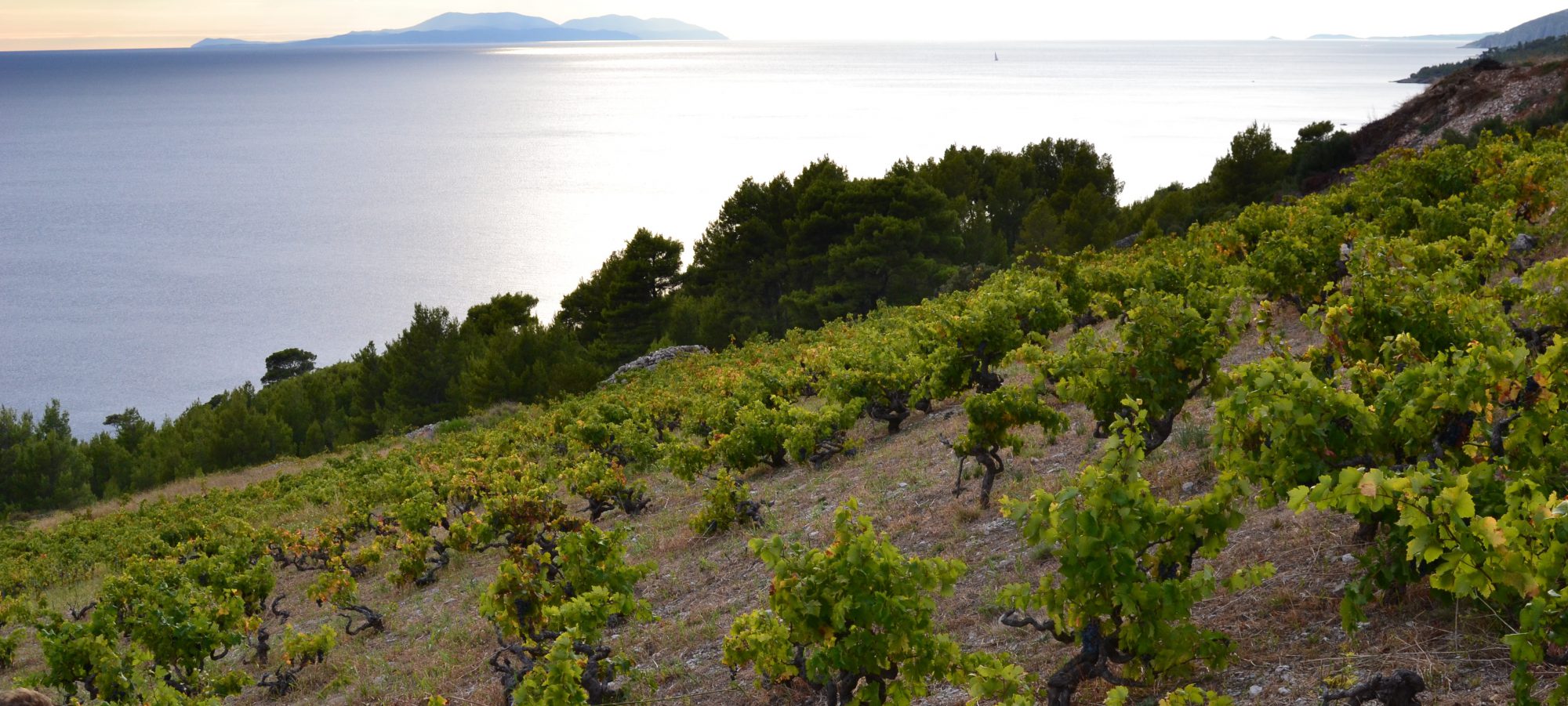





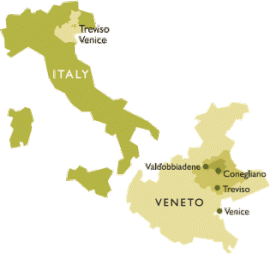


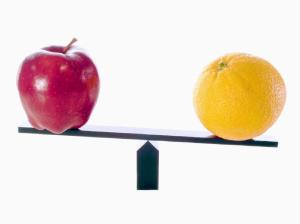



Is a bit of sex still sex or not (“I did not have sex with this women” :-), that’s the question.
I’m “afraid” it is, and than the problem starts, as lawyers make good money from such disputes, making them the wealthy happy buyers of very limited true Prosek.
Adding two simple words might do the trick “-Prosek of-Croatia”, but I am not a lawyer.
Prepare to see a couple more “fights” on names, brands and such.
Gouda for instance, written on the most horrible “fake cheese” in Croatia might be the next victim, and I hope Brussels wins on that issue.
No need to change the quality tradition of genuin Prosek, just put a different label on it.
An interesting job for a clever marketeer.
Cheers, Pim.
This smacks of big brother, the wines are totally different, made in 2 different countries, and the names are different. the EU is ridiculous at times and they need standing up to, and syaing enough is enough. Leave Prosec alone.
Thank you Cliff, yet again, for what is surely the most coherent and punchy article I’ve read on the subject ever since this entire farce began. It is evident that the Consortium is putting pressure on EU bureaucrats who aren’t informed enough or bothered enough to look at the problem for what it is (I mean, what about Vin Santo and Vinsanto for god’s sake?! Or Vodka and vodka?))
I have spoken to only 3 people who are not Croatian and who are not in the industry who have independently heard about this “dispute” and was interested to learn that neither one understood what the problem actually is (they either read articles or listened to a feature on BBC radio). 2 were British and 1 Italian and they all walked away under the impression that Croatia is producing a copy of prosecco and giving it a slightly different name – neither one of them therefore saw any problem with the EU banning the name Prosek under the (grossly misunderstood) circumstances. In oter words, much more nds to be done to publicise this issue and to make it clearer.
Another interesting detail that was pointed out to me is that Italian scholars (linguists) have confirmed that the the term prosecco was (as the name indeed suggests) used in Italy to describe Prosek-like products; sweet wines made from dried on the vine or straw grapes (pro-secco). Now days in Italy we have Recioto, Vin Santo etc. In other words, the term prosecco is,under the watchful eye of the EU, being used to describe a product which is technically not Prosecco! According to Italian linguists (I can get the details if you are interested) prosecco has “evolved” as a product from a sweet dessert wine into a dry sparkling aperitif over time but has kept the original name. So the irony is that Prosek as a product is much closer to prosecco than Prosecco DOC will ever be!
Sadly, in my experience, the confusion between Prosek and Prosecco is greatest in Croatia of ll places, where one can still find wine lists where Prosek is translated as Prosecco in wine bars that don’t even sell Prosecco (if they did they would see that such a translation is impossible). I wouldn’t be surprised if this was the root cause of the Consortium’s protectionist paranoia.
Below is a duplicate of a comment/reply left on an incorrect post. I struggle a bit with technology but have adopted some of that Slavonian resolve to see me through. L.O.L.
Here is my earlier post: “I know someone who simply enjoyed the light & bubbly qualities of Prosecco &; as irony would have it, their heritage,was both Coatian & Italian.
Is there anyone who produces the light bodied & gentle bubbly glera grape product domestically; that is, here in the U.S.? I don’t dare call it Prosecco then, do I? If produced here, what is it called?
Very interesting article for a Proseeco buyer. Thank you
Hi John,
If it were produced here (in the US) it would have to be called sparkling wine made from glera. perhaps “frizzante di glera” or something along those lines. 😉 that said, I am not aware of any producers in the US who make sparkling wine from glera. There might be somewhere, but a quick Google search didn’t reveal much.
thanks for your comment and support!
best,
cliff
We always drink Prosek whenever we have the chance to visit Vrbnik, the small village of KrK, the biggest Croatian island. Last year in July we spent some days there again and bought some bottles. Some friends were there too in September and we ordered some more bottles….And they returned with bottles labled “PORET”….From the same village, from the same wine-cellar…The same wine under new name….Congrats to Brussels to solve the biggest problem of the European Union…Idiots….
Prosek is fantastic croatian desert wine and this issue (like many others) is one of the main reasons of countdown of EU…. big fish eats small fish.. this is the main rule of EU regulations… so.. who profits from the EU ? small countries gets only the scrumbs converted to EU contributions which are placed on eyes catching big blackboards all around smaller countries to blind the people´s eyes when destroying tjeir own national heritage
critical attitudes becomes invisible in the hands of envious…